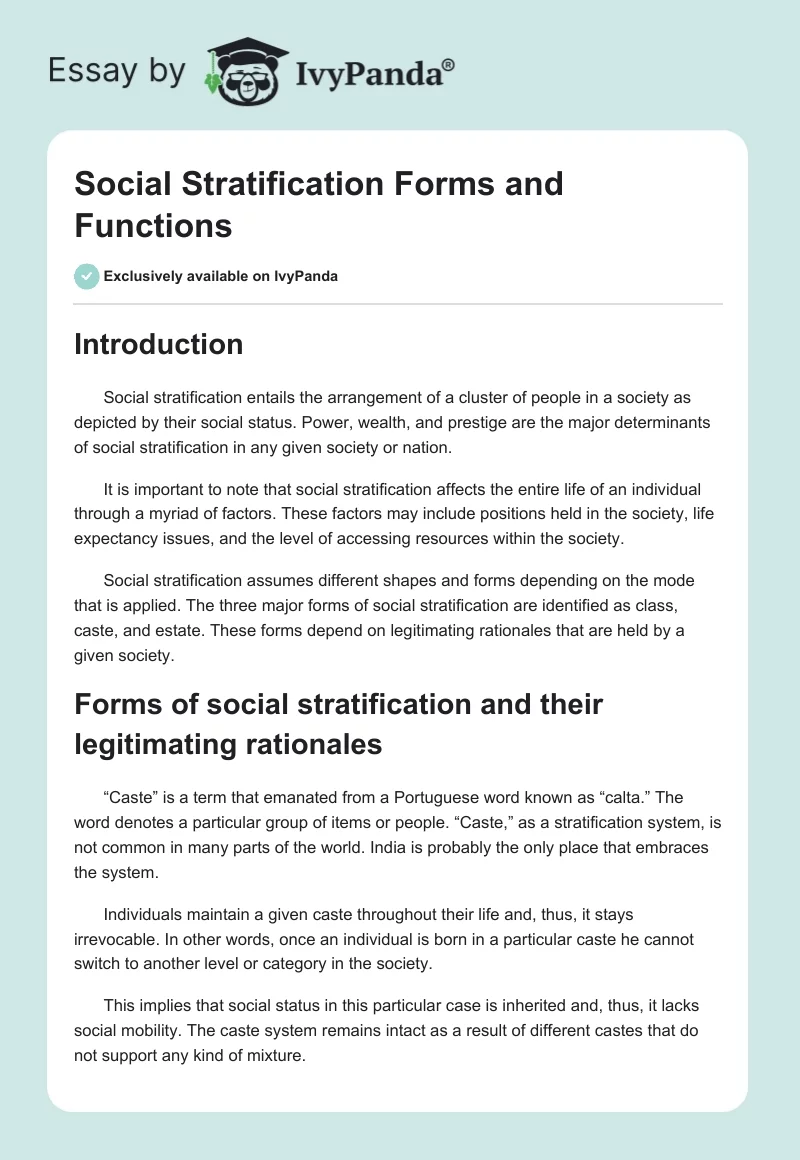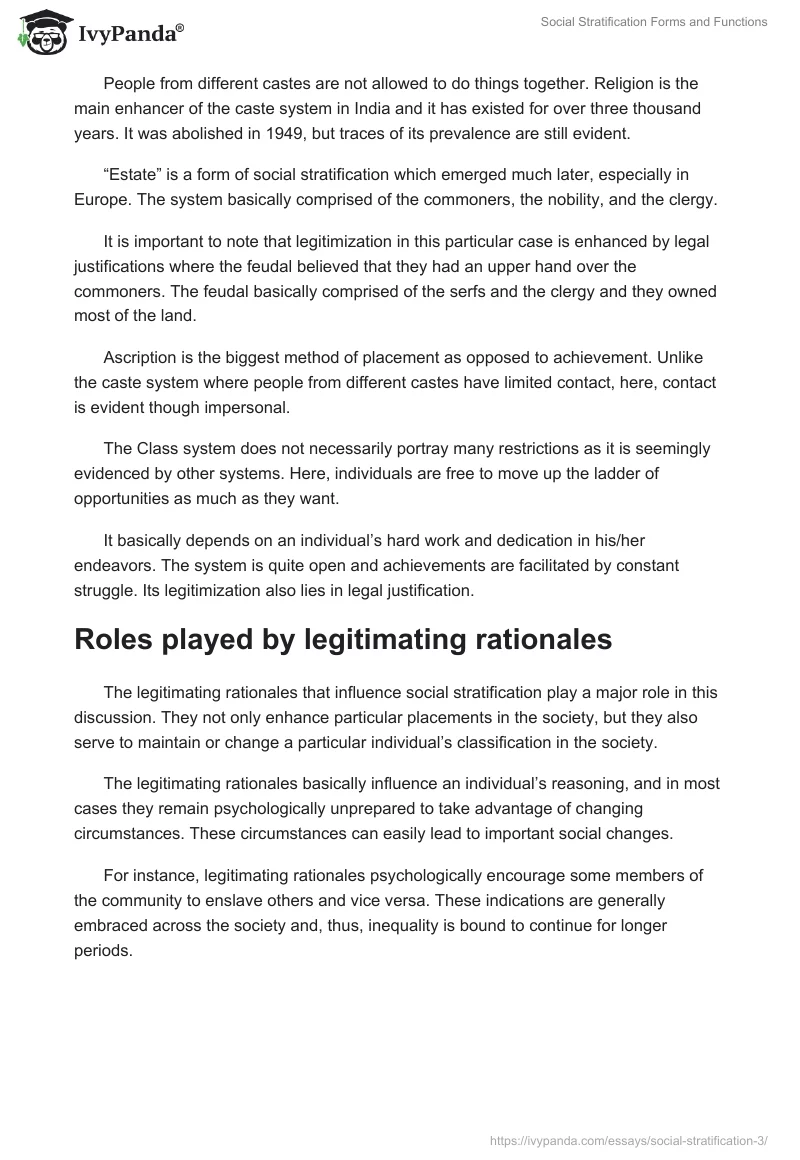Introduction
Social stratification entails the arrangement of a cluster of people in a society as depicted by their social status. Power, wealth, and prestige are the major determinants of social stratification in any given society or nation.
It is important to note that social stratification affects the entire life of an individual through a myriad of factors. These factors may include positions held in the society, life expectancy issues, and the level of accessing resources within the society.
Social stratification assumes different shapes and forms depending on the mode that is applied. The three major forms of social stratification are identified as class, caste, and estate. These forms depend on legitimating rationales that are held by a given society.
Forms of social stratification and their legitimating rationales
“Caste” is a term that emanated from a Portuguese word known as “calta.” The word denotes a particular group of items or people. “Caste,” as a stratification system, is not common in many parts of the world. India is probably the only place that embraces the system.
Individuals maintain a given caste throughout their life and, thus, it stays irrevocable. In other words, once an individual is born in a particular caste he cannot switch to another level or category in the society.
This implies that social status in this particular case is inherited and, thus, it lacks social mobility. The caste system remains intact as a result of different castes that do not support any kind of mixture.
People from different castes are not allowed to do things together. Religion is the main enhancer of the caste system in India and it has existed for over three thousand years. It was abolished in 1949, but traces of its prevalence are still evident.
“Estate” is a form of social stratification which emerged much later, especially in Europe. The system basically comprised of the commoners, the nobility, and the clergy.
It is important to note that legitimization in this particular case is enhanced by legal justifications where the feudal believed that they had an upper hand over the commoners. The feudal basically comprised of the serfs and the clergy and they owned most of the land.
Ascription is the biggest method of placement as opposed to achievement. Unlike the caste system where people from different castes have limited contact, here, contact is evident though impersonal.
The Class system does not necessarily portray many restrictions as it is seemingly evidenced by other systems. Here, individuals are free to move up the ladder of opportunities as much as they want.
It basically depends on an individual’s hard work and dedication in his/her endeavors. The system is quite open and achievements are facilitated by constant struggle. Its legitimization also lies in legal justification.
Roles played by legitimating rationales
The legitimating rationales that influence social stratification play a major role in this discussion. They not only enhance particular placements in the society, but they also serve to maintain or change a particular individual’s classification in the society.
The legitimating rationales basically influence an individual’s reasoning, and in most cases they remain psychologically unprepared to take advantage of changing circumstances. These circumstances can easily lead to important social changes.
For instance, legitimating rationales psychologically encourage some members of the community to enslave others and vice versa. These indications are generally embraced across the society and, thus, inequality is bound to continue for longer periods.
Functions of social institutions
The basic function of a social institution in the society is to help that particular society or nation to grow. Strong social institutions serve to discourage corruption and typical vices that weaken the society. It is evident that strong social institutions base on merit as opposed to personal satisfaction.
This aspect is evident in progressing countries. Lack of effective institutions indicates that the society will most likely suffer from illiteracy, huge debts, poverty, and corruption. Social institutions are typical relational structures that create relationships and obligations.
There are several social institutions in a society namely; family, religion, government, education, and economy. For example, the functions of the economy help pave way for production of services and goods.
On the other hand, the functions of religion are meant to instill a moral code among the members of a particular society.
List of achieved and ascribed statuses
There are two categories of statuses that an individual can portray at any given time. The two include achieved and ascribed statuses. An achieved status is basically acquired through merit; it is made by a person and portrays his/her expertise, efforts, and talents.
Doctors, nurses, and teachers are examples of individuals with an achieved status. The issue of race is a typical example of an ascribed status. An ascribed status is depicted by an individual’s limited possession of control over that same status.
Currently, my prowess in athletics, my writing skills, and my career in music, stand out as achieved statuses. These were achieved as a result of hard work and intensified practice. Sex and race, on the other hand, qualify as my ascribed statuses.
The difference between the two categories is that the former entails abilities and talents that I worked so hard to achieve, whereas, race and sex are issues that I had little control over. In other words I did not choose my gender or race, but this automatically happened at birth.


